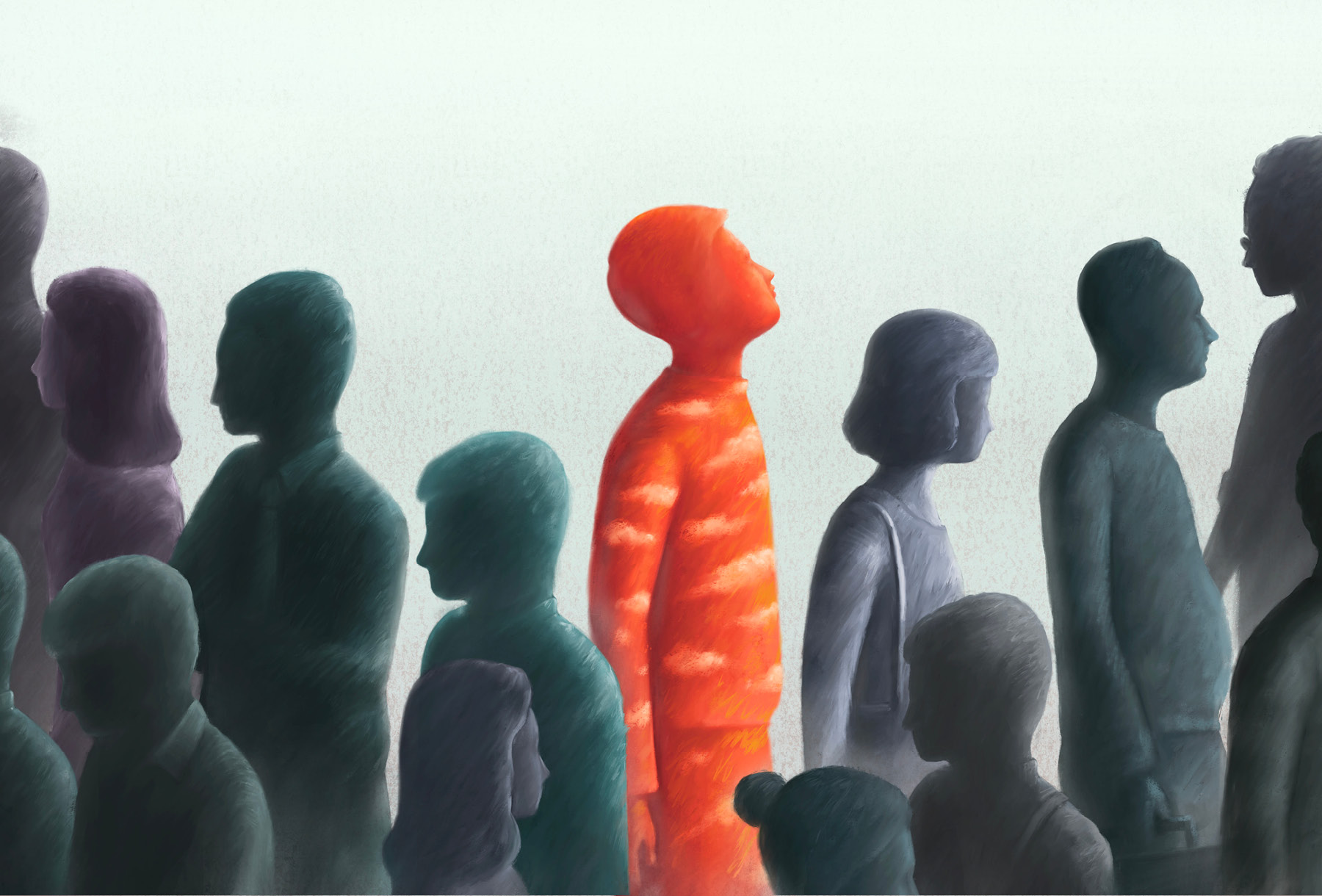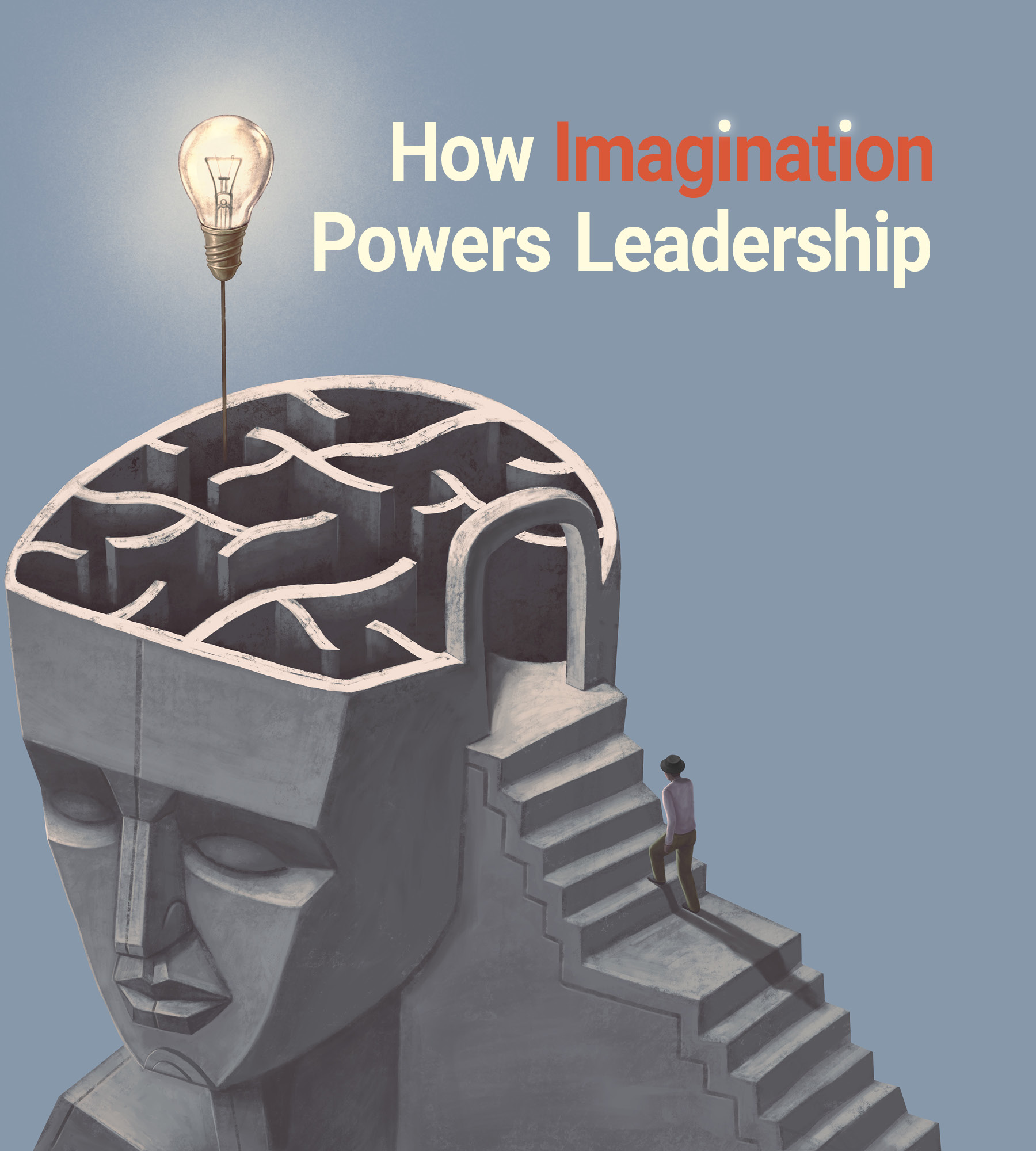Language
You can read the magazine in one of the following languages
It’s the beginning of the week. You sit at your desk to work on a project, your mind focused and ready. Then your phone beeps, your inbox dings and notifications start pouring in. A client needs a new brief turned around urgently, an ops problem requires a quick decision, or there’s a media inquiry on an inflammatory issue.
Scrolling through messages, your heart speeds up and cortisol levels rise, shifting your mind from creative openness to hazard perception and firefighting mode. You scramble to address the immediate crises, sidelining your strategic work for the day.
Sound all too familiar? Many leaders we speak with feel stretched thin. In the simultaneous ages of polycrisis and the attention deficit economy, they’re navigating a world that’s increasingly complex and time-poor.
In a hyper-connected workscape, where every notification demands attention and every decision feels fraught with potential division, it’s easy to lose sight of the big picture.
Recent years have brought intersecting challenges: the climate crisis, the COVID-19 pandemic, economic pressures, geopolitical polarization and social fragmentation.
Each has tested our resilience and nudged us toward an increasingly reactive culture that foregrounds immediate reactions and definitive answers.

Imagination can move us from merely reacting to crises, to contemplating how better systems can enable collective flourishing within a diverse society.
It’s here that the ability to reflect and imagine emerges as a difficult yet essential skill. Imagination is the exercise of forming concepts that are not currently in front of us.
It allows us to ask ‘what if’ and ‘why not’ through visualization, creative thinking, scenario building, role-playing and daydreaming. It helps us break paradigms and prevailing mental models so that we can effect change.
In envisaging alternative futures, imagination can move us from merely reacting to crises, to contemplating how better systems can enable collective flourishing within a diverse society.
Imagination is a defining characteristic of our species, driving landmark shifts from the enlightenment to the industrial revolution, to the advent of the digital economy.
In the last two decades, we have seen the meteoric rise of tech ‘disruptors’: hectocorns like Amazon, Meta and Apple that have transformed the market.
Arguably, the venture capital patter of disruption and innovation is really a proxy for the act of applied imagining. At their inception, these innovators didn’t think defensively but focused instead on imagining a different way.

Arguably, the venture capital patter of disruption and innovation is really a proxy for the act of applied imagining.
Recognizing this in their 2021 book The Imagination Machine, Martin Reeves and Jack Fuller argue that in a marketplace where the competitive fade rate is only accelerating, imagination is the new execution.
Of course, in recent years such companies have rightly come under increasing scrutiny for the implications of bringing their imagined worlds into being.
They’ve revolutionized the ways that we live, work and connect but at the cost of social value, leading to issues including privacy violations, misinformation and community fragmentation. For me, this underscores a fundamental point on applied imagining – it must be through an ethical lens.
The power to imagine and create must be coupled with, or even curbed by, a responsibility to ensure that new systems are equitable and sustainable and always place people at their center. Some organizations and systems have done this well.
Founded by Anita Roddick in 1976, The Body Shop was revolutionary in its centering of ethical practices, community engagement and the environment. By the 1990s, it had expanded globally, with thousands of stores in over 60 countries.
The Body Shop’s influence extended beyond its own model; it catalyzed a shift in consumer expectations, pushing other companies to adopt similar ethical standards around animal testing and ethical sourcing.

The power to imagine and create must be coupled with, or even curbed by, a responsibility to ensure that new systems are equitable and sustainable.
Australia’s Medicare system was introduced in 1984, at a time when healthcare was seen as a private matter and access was largely determined by an individual’s financial means.
The architects of Medicare, along with others behind international universal healthcare schemes, imagined a radically different approach: a system that provided free or subsidized treatment to all Australians.
This ethical imagining of healthcare as a right – rather than a privilege – transformed national wellbeing, driving accessible care and reduced financial stress. Today it’s an institution that Australians wouldn’t wish to be without.
Giving attention to ethical imagining is hard, even if we understand that it’s not at odds with performance and instead offers an opportunity to change the game. As anyone with an ever-ballooning list of ‘strategic work I’ll get to once I’ve cleared the clanging notifications of my inbox,’ can attest, the bias towards short-term issues management over long-term change can keep us on the hamster wheel.
Equally, there’s an increasing cultural tendency toward ‘anxious’ imagining and doom scrolling rather than generative imagining.
Finally, there’s the cognitive and logistical stretch of how a single person or organization can alter complex, interdependent systems and incentives.
However, it’s here that we can invoke the words of anthropologist Margaret Mead: “Never doubt that a small group of thoughtful, committed citizens can change the world; indeed, it’s the only thing that ever has.”

Developing an ethical imagination capability across your organization requires a deliberate shift from a reactive to expansive mindset.
Ethical imagining is not just a solo act, but a social one, too. Whether it’s across your community or organization, collective imagining and reimagining is a powerful step along the journey toward better.
It’s not the only or last step, of course – courage, compromise, trust, application and collective action are all needed, too.
Developing an ethical imagination capability across your organization requires a deliberate shift from a reactive to expansive mindset.
As someone recently said to me, make the problem bigger. And imagine the solution bigger, too. Reeves and Fuller offer some ways we can build an imagination capability in our workplaces:
• Creating intentional spaces for reflection and exchange;
• Centering imagining as part of everyone’s role;
• Exploring the unfamiliar and anomalous and encouraging counterfactual reasoning;
• Most importantly, focusing on play and the creation of ‘playgrounds’ as a way to encourage collective imaginative thinking.
A sentiment I hear often from leaders is that time and attention are luxuries. And while as an individual with my own to-do list, I absolutely understand this, I also believe one of the highest duties of a leader is to make space to imagine, to find new ways of being and doing.
Successfully imagining can mean making space, scheduling, prioritizing, delegating, letting go and changing our behaviors. But it is to our leaders that we look, to drive change for a future that is not only different but better. It all begins with imagination.

Catherine Woo
Contributor Collective Member
Catherine Woo is Director of Partnerships and Engagement at Cranlana Centre for Ethical Leadership, which provides learning and advisory programs for individual leaders and organizations. She was previously CEO of the Australia-United Kingdom Chamber of Commerce in London, where she chaired the Australia-United Kingdom Trade Policy Committee and founded the Chamber’s insights program, which included streams on Brexit, ESG, DE&I, future industries and leadership. Learn more at https://cranlana.org.au/
